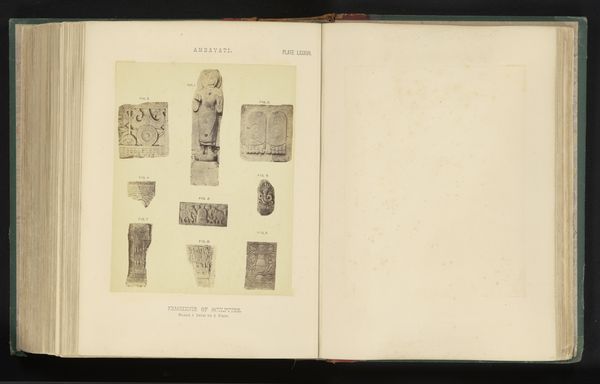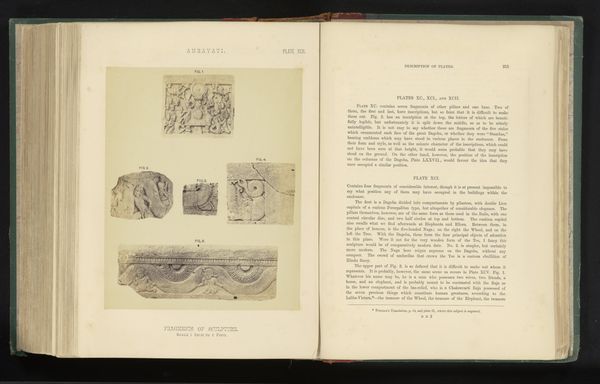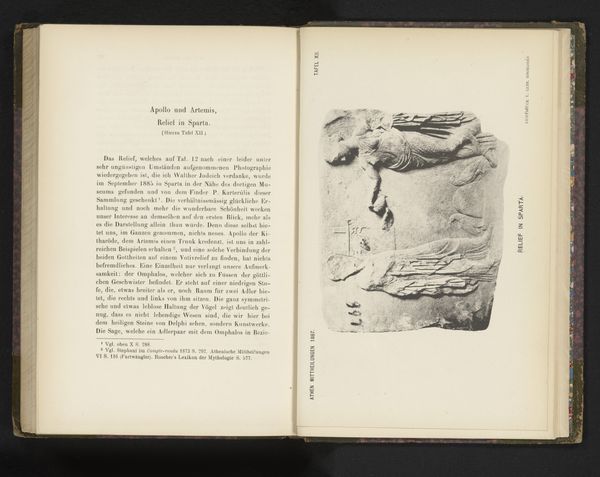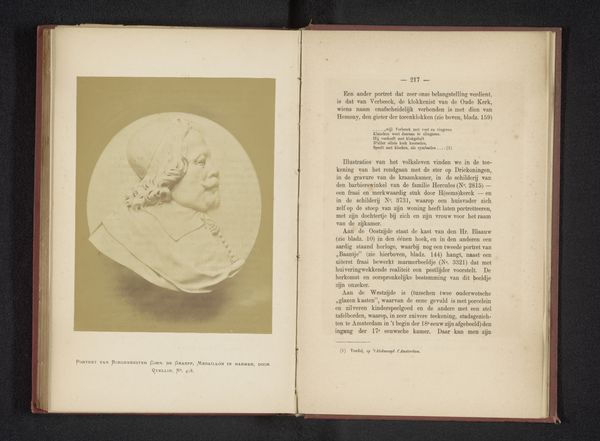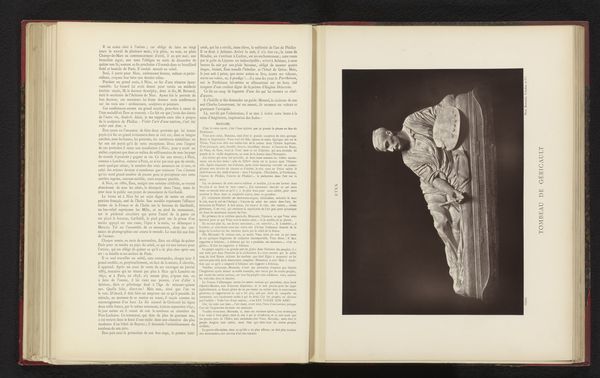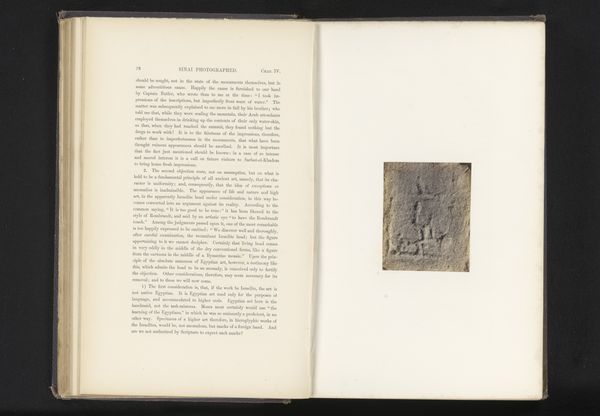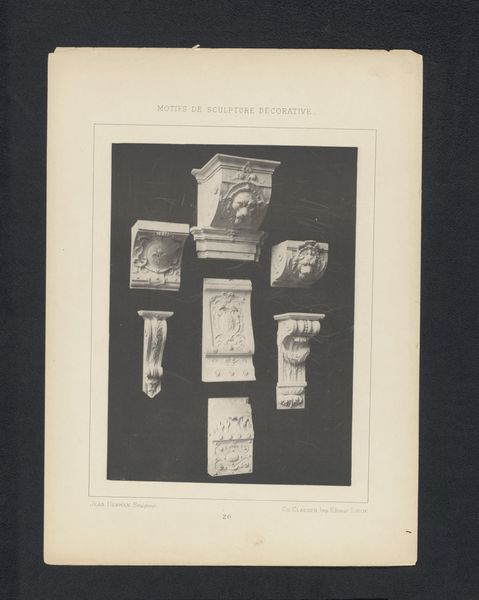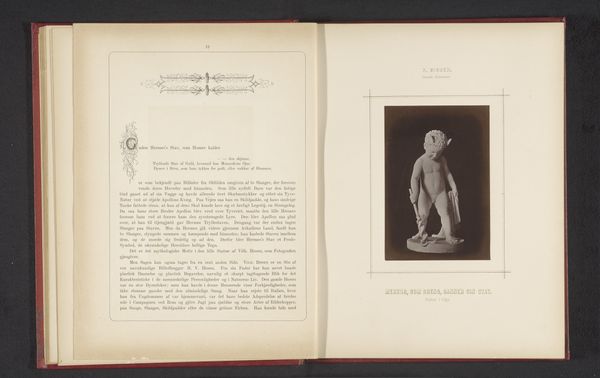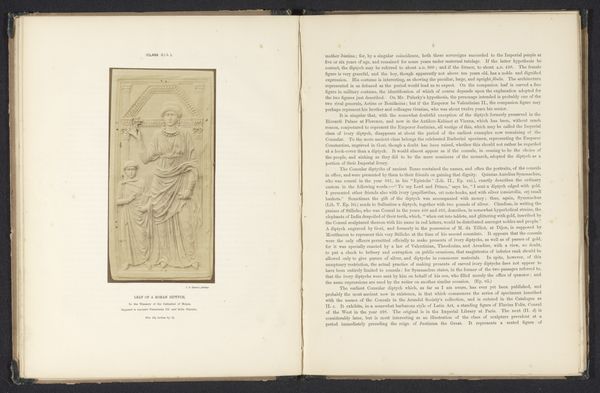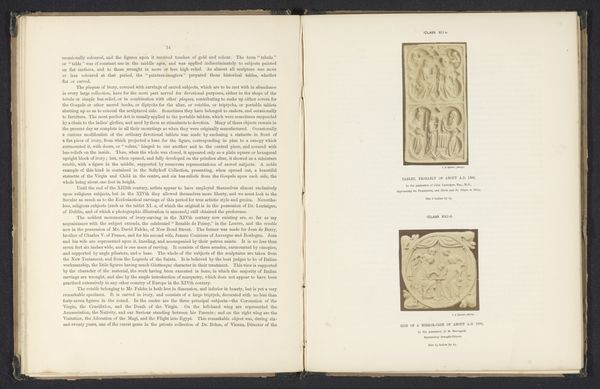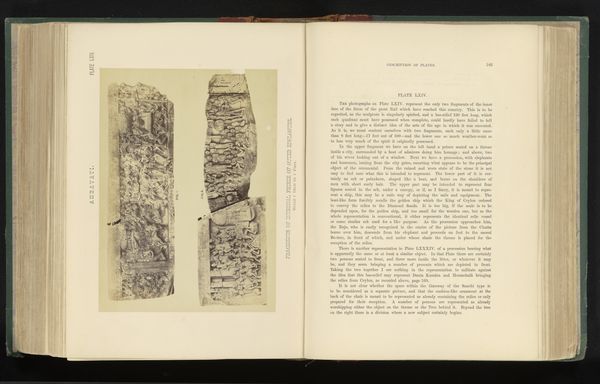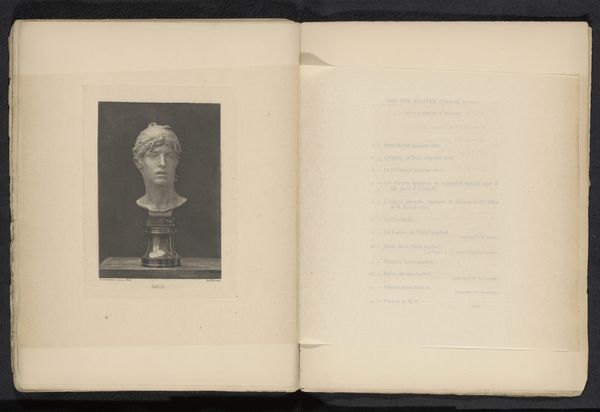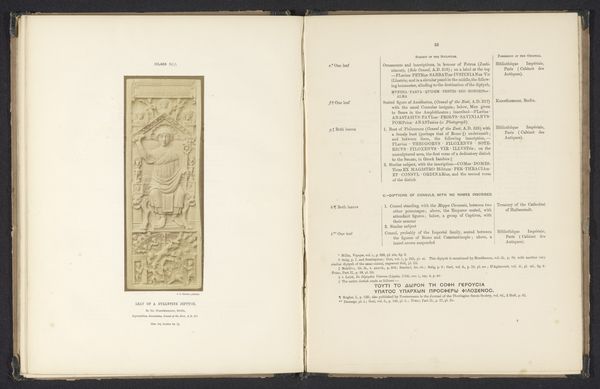
print, sculpture
#
portrait
# print
#
greek-and-roman-art
#
ancient-mediterranean
#
sculpture
Dimensions: height 158 mm, width 110 mm
Copyright: Rijks Museum: Open Domain
Curator: Here we see a reproduction of a sculpture: a "Granite Head of Ptolemy VI Philometor from Aegina," sometime before 1886. Editor: It's captivating. Despite being just a printed image, I'm struck by the stern and somewhat melancholic expression. You can almost feel the weight of the granite from this page. Curator: Indeed. Granite lends the portrait a sense of permanence. Found near the harbor of Aegina sometime before 1882, this piece demonstrates how art shapes our perceptions of rulers and political power. It shows Ptolemy, who ruled Egypt in the 2nd century BCE. What intrigues me is that the printing makes visible the way the sculpture’s surface speaks of ancient processes. Editor: Yes, it looks to be crafted for institutional display— perhaps for a royal lineage to connect with antiquity. Its presence in Athens—suggests something about art's movement across boundaries, and it becomes a carrier of imperial messages even. Is it an advertisement for power or a careful study in idealization? The choice of medium here has many questions. Curator: The combination of Egyptian motifs and Greek sculpting conventions signifies the fascinating blend of cultures during the Ptolemaic era, doesn’t it? How would you relate to the artist’s work with material production and its association with Greek traditions? Editor: Well, consider the impact this image, now widely distributed, had within scholarly circles, molding opinions. Its availability allows various people, like us, to access Ptolemaic history. Curator: So, beyond its intrinsic value, the significance is within its socio-political footprint—echoing through scholarly study to shape interpretations of Hellenistic kingship. Editor: Exactly, and what's the place of printing on paper within an institutional frame as the role of artwork reproductions grew? I leave thinking of museums who may acquire casts instead of originals and democratize access to power and history, to shape their narratives within their gallery. Curator: Food for thought!
Comments
No comments
Be the first to comment and join the conversation on the ultimate creative platform.
